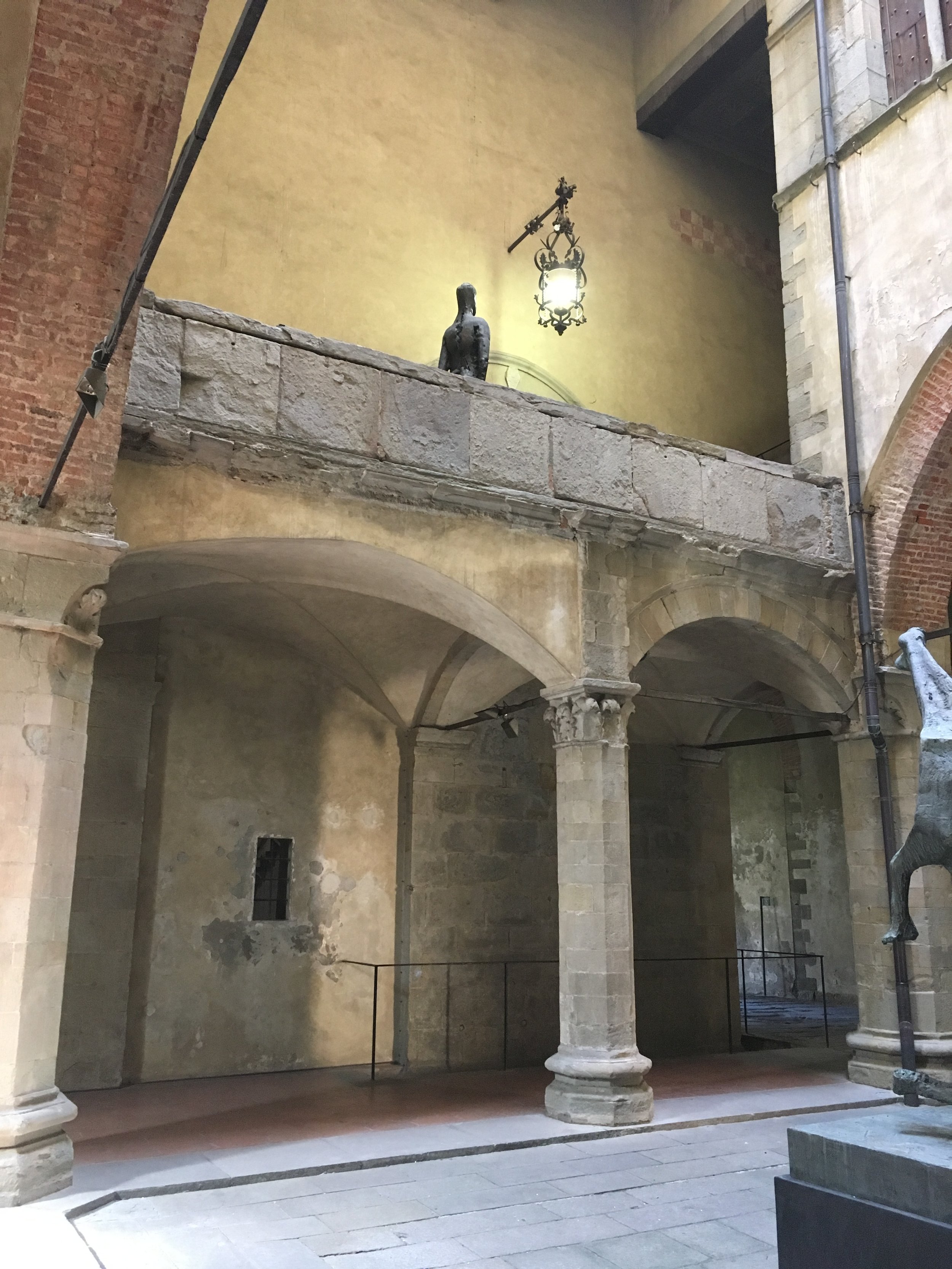Pistoia - a City of Culture
Each year the Italian Ministry of Culture identifies one city as an "Italian Capital of Culture." The competition is fierce; competing towns plan renovations and improvements and the winners receive funds to promote structural and cultural projects, along with tourism. It's a big deal! Mantua won the title in 2016. In 2018 it will be Palermo's turn.
For 2017, the Italian Capital of Culture is the city of Pistoia, which lies midway between Lucca and Florence. Pistoia is too often overlooked by tourists in favor of larger and better known Florence or nearby Lucca. That's a shame because Pistoia is a city with fascinating history, sights, and culture. I have to admit that despite many visits to this area, I had never ventured to Pistoia - until now.
Arched loggia in front of the Palazzo Comunale.
Pistoia is a pleasant 40-minute train ride from Lucca, my home away from home on this trip. The countryside between the two is dotted with backyard gardens, nurseries, small towns, and hills topped with towers, churches, or small villages. Arriving at the train station in Pistoia, it's an easy walk, about 10 minutes, to the centro storico (historic center). I visited on a market day, so the Piazza del Duomo was bustling with merchants selling everything from buttons to bakeware.
Piazza della Sala was the site of many food stalls - fruits, vegetables, fish, cheeses, olives. Is there anything more gorgeous than a pile of small purple artichokes at an Italian market?
The market ended about noon and before long the merchants packed up, the street sweepers cleared away all evidence of the market, and the piazza quieted. For the rest of the afternoon the streets were uncrowded and the town peaceful.
Some highlights in Pistoia:
The Cathedral of San Zeno (the Duomo), which sits at the heart of the oldest part of town, dates from the 12th century (though it's believed a church has stood here since even earlier times).
The raised altar with its ornately frescoed ceiling vault is stunning. Unfortunately the chapel containing the famous silver Altar of San Giacomo was not open when I visited - a good reason to return! There is beautiful artwork throughout the church. Underneath the main altar is a crypt, which is stark and surprisingly beautiful after the more ornate church. The church also has a soaring campanile (bell tower) and an octagonal baptistery that lies across the piazza.
The main altar in the Duomo.
Also in the Piazza del Duomo are the Palazzo del Comune, which houses the Museo Civico, and the Palazzo Pretorio with it's imposing "stone seat of justice." I don't think I would want to face a judge here! Step into both for the beautiful architecture, remnants of frescoes, and sense of history.
The Palazzo Pretorio has wonderful fresco remnants.
I found the Museo Civico well worth a visit - the entrance courtyard is impressive and the art, especially the oldest pieces in the first two rooms, is captivating. Entrance is free for anyone over 60; on the day I visited there were few other people in the museum.
A 13th century painting with a typically religious subject.
Time for a break? The Caffe Duomo is a good spot for a coffee and perhaps a pezzo dolce (sweet) .
Just off Piazza del Duomo are the Tower of Catilina, a tiny church (San Salvatore; currently undergoing restoration) and, just a couple of blocks away, the Ospedale del Ceppo with its painted ceramic frieze (by the Della Robia family). The exteriors of all three are worth a look.
Tower of Catilina
Tondo on the facade of the Ospedale del Ceppo.
The smaller Piazza della Sala and even smaller adjacent Piazzetta degli Ortaggi feel like the friendly living room of Pistoia. They are ringed with bars, shops, and restaurants. Look for the beautiful stone well in the middle of P. Della Sala. Lunch was great at the lively Taverna Gargantua', which looks into the piazzetta and onto a modern sculpture of 3 young men, all blindfolded and holding lanterns as they set out in different directions. The sculpture, called Giro del Sole (Trip around the Sun), is by local Pistoian artist Roberto Barni.
Giro del Sole sculpture In Piazzetta degli Ortaggi, Pistoia
This is just a taste of Pistoia - there is much more to experience and it's definitely going to require a return trip. -post by JB
Interesting architecture on the exterior of the Duomo.











